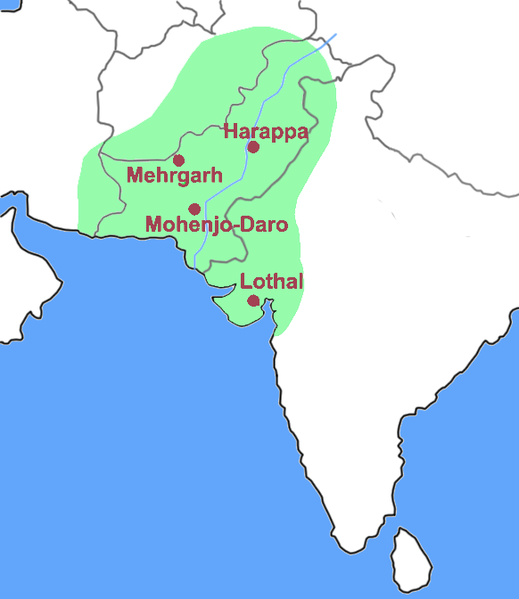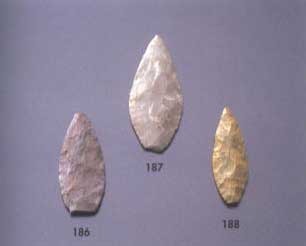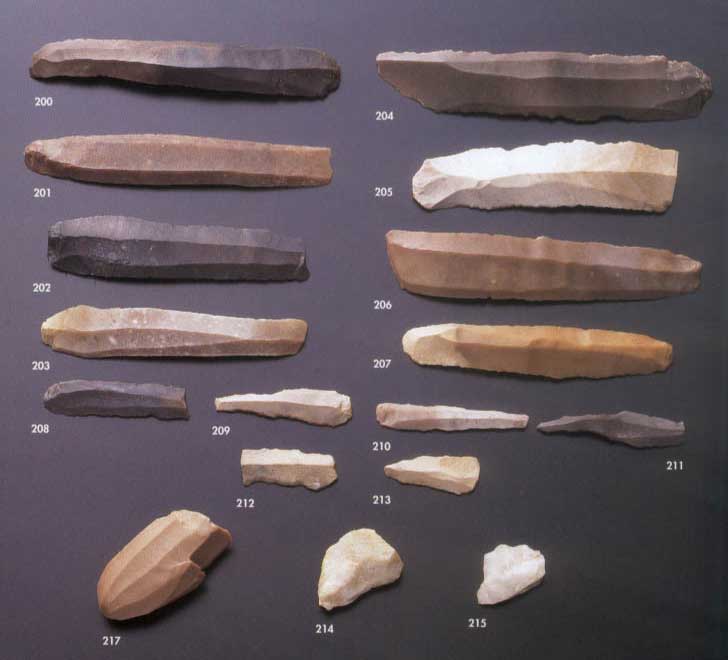
Torso of a "Priest King"
Mohenjo-daro
c. 2000-1900 BCE
Seated Male scuplture or Priest King may represent a leader or an ancestor figure. The head resembles Mesopotamian art distinctive physical traits such as thick lips, long slit eyes, low forehead, broad nose and shoulders. The mans garment is patterned with a trefoil.
http://www.harappa.com/indus/41.html

Nude Torso
Harappa
c. 2000 BCE.
This picture is an example of a contrasting naturalistic style of ancient Indus Orgins. This is a form of an athletic male ideal developed in ancient Greece. The sculpture emphasizes the soft texture of the human body and musclar form. Made from Copper.
http://www.blingcheese.com/graphics/1/nude+male+torso++harappa++indus+valley+civilization.htm

Larger Water Tank
Harappan
c. 2600-1900 BCE.
This image could possibly be of a public or ritual bathing area, Mohenjo-Daro Indus Valley Civilization. It is a large water tight pool that may have been a public bathing area. The arrangement is a grid-like plan with wide avenues and narrow side streets. The engineering and technical skills are highly advanced. Also this image can be consider the great bath. The Great Bath measures 11.88 meters x 7.01 meters, and has a maximum depth of 2.43 meters. Two wide staircases, one from the north and one from the south, served as the entry to the structure.
http://www.imagesofasia.com/html/mohenjodaro/bath-indus.html

Map of Indus Valley Civilization
3300–1300 BCE; mature period 2600–1900 BCE)
Map of South Asia which is now present day pakistan and in Northwestern India. The map is broken down into 4 different villages with the Indus river going through them.
http://en.wikipedia.org/wiki/Indus_Valley_Civilization
Horned Animal
Mohenjo-daro
Harappa
The unicorn is the most common motif on Indus seals and appears to represent a mythical animal that Greek and Roman sources trace back to the Indian subcontinent.There is a 8 symbol that runs along the top of the seal that could symbolize language or some other form.
http://www.harappa.com/indus/25.html

Seals and Sealings
Harappa
2500-1900 BC.
Long rectangular seals and a terra cotta sealing (bottom) with Indus script. This could be a form of how they wrote or describe things. The put symbols and marks on these rectanglar carvings. This also could have been symbols or other work of arts such as roadsides or other things.
http://www.harappa.com/indus/31.html

Indus Valley Language
This is a bit of the language for the Indus Valley Civilization.
http://www.andaman.org/BOOK/F1-IndusCivilization/Indus-Script.jpg

Indragiri hills, at Sravanabelgola, Karnataka state in southern India
http://www.andaman.org/BOOK/F1-IndusCivilization/indus.htm
(160 km West of Banglaore) is the largest of the many Jain granite giants, most representing Gommateshwara (Bahubal), a Jain saint and son of the first Tirthankara of the current half-cycle, Rishabha. This statue was carved out of one block of granite a little more than 1,000 years before the present on orders of a rule of the Dravidian Western Ganga dynasty which lasted from 1,650 to 1,000 before the present.

Indus Valley Civilization Arrow head tools.
This image is stone tips of the arrow of the hunters. Even though this was a Bronze age they used many stone items as tools.
http://www.heritage.gov.pk/html_Pages/Indus_stone_tools.htm

Stone Blades
Materials
Tool in the image where used for many reason to dig, cut, sew and etc. All of these tools were used for all of the daily work.
http://www.heritage.gov.pk/html_Pages/Indus_stone_tools.htm
No comments:
Post a Comment